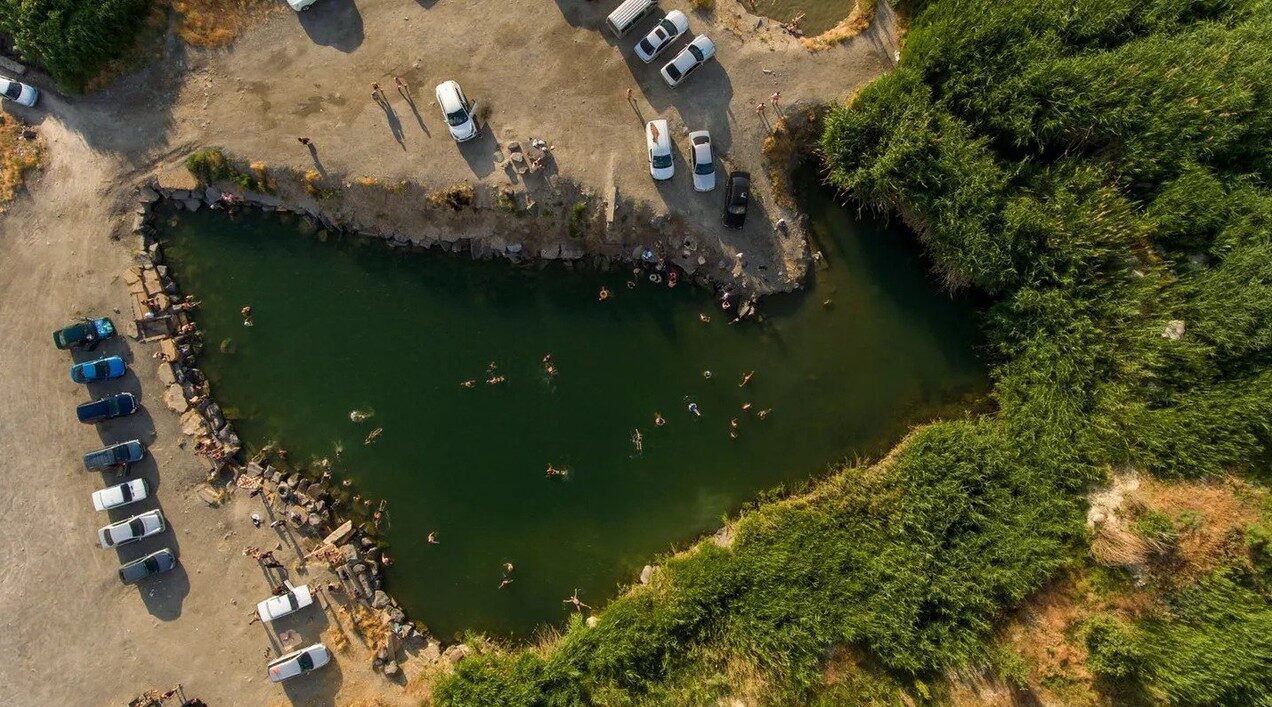Latest Listings
Related Listings
Close To You
A. L. Takhtajyan Institute of Botany of the NAS RA

Botanical Garden
1050 m
Natural
Easy
VISITOR INFORMATION
🕒 Opening Hours
April - October: 09:00 – 20:00
November - March: 09:00 – 17:30
🎟️ Admission
500 AMD per person
200 AMD for children under 11
🚌 Getting There
By Public Transport: Buses 20 and 54 stop near the garden
By Taxi: Approximately a 15-minute drive from Yerevan city center
🎫 Tickets and guided tour bookings: botany.am/hy/tickets
HISTORY
The history of the Yerevan Botanical Garden dates back to 1935, when it was established on the northeastern elevated outskirts of the capital, on an 80-hectare semi-desert area that was almost completely barren. From its very inception, the garden has served as a hub for education, environmental awareness, and recreation, while also fulfilling a vital mission in advancing botanical science.
The garden was initially developed as a dendrological collection aimed at gathering and showcasing valuable and ornamental plant species brought from various phytogeographic regions. In the 1940s, through the efforts of the garden’s staff and prominent Armenian botanists, the first historic alleys were planted, including Caucasian and small-leaved lindens, horse chestnut and summer oaks, Osage orange, and Crimean pine, many of which still retain their compositional role today. Between 1954 and 1970, the garden was redesigned to include geographic exhibition plots representing typical tree species from the Caucasus, Siberia, Europe, North America, East Asia, and Crimea. These sections offered visitors the opportunity to explore diverse global flora without ever leaving Armenia.
The development of the Yerevan Botanical Garden has been closely linked with the Institute of Botany of the NAS RA, which traces its roots to 1922 with the founding of the Natural History Museum by Alexander Shelkovnikov. In 1931, the Institute of Botany was officially established and became one of the leading institutions of the Academy from 1943 onwards.
Over the years, the garden has become a central hub for studying plant taxonomy, evolutionary morphology, paleobotany, palynology, and plant ecology. Armenia’s leading botanists have conducted research here, many earning international recognition. In 2023, the Botanical Museum was inaugurated, housed in two floors of the garden's former administrative building. The museum showcases both ancient and modern plant life of Armenia and the region, from the Devonian period to the Urartian era.
COLLECTIONS
The plant collections of the Yerevan Botanical Garden have been developing since the 1930s, aiming to gather representatives from diverse phytogeographic zones for scientific research, educational programs, and ecological awareness. The collections are divided into several main sections, each designed according to geographic origin or ecological requirements:
Outdoor dendrological collection - Developed in the 1950s-1970s, this area spans about 16 hectares. It features tree and shrub species typical of the Caucasus, Crimea, North America, Europe, Siberia, and East Asia. The plots are arranged by ecological-geographic principles, allowing visitors to experience the flora of different continents, adapted to Armenian conditions.
Greenhouse (tropical and subtropical plants) - Located indoors, this section preserves over 670 species, including Brazilian sisal, Japanese sago palm, ice plant, cotton, and rice varieties. The greenhouse supports both observation and year-round educational programs.
Botanical Museum - Opened in 2023, this museum spans two floors. The first floor presents modern botanical specimens, including species from the Red Book, fungi, lichens, fruits, and photographic taxonomy exhibits. The second floor displays plant fossils ranging from the Devonian period (around 370 million years ago) to the Urartian kingdom, with rare samples from Armenia, Artsakh, and neighboring regions.
The aim of these collections is to facilitate the study of Armenia's native flora and raise awareness of global biodiversity, positioning the garden as a unique hub connecting science, nature, and education.
GUIDED TOURS
Tours at the Yerevan Botanical Garden are a key format for education, exploration, and environmental learning. The garden offers diverse, age-appropriate tour options that enrich the visitor experience while fostering curiosity and care for nature. Tours are available both individually and in groups, conducted in Armenian, English, and Russian.
Tour formats
Ages 3 - 6: Interactive visits lasting 20-40 minutes, focusing on developing sensory perception through color, shape, smell, and touch.
Ages 7 - 12: Educational tours lasting 45-60 minutes, covering the outdoor exhibition plots, historic alleys, the tropical and subtropical greenhouse, and key exhibits of the Botanical Museum.
Ages 13 and up: In-depth tours exploring plant taxonomy, biodiversity, ecological roles of flora, and conservation issues. Duration: 45-60 minutes.
INTERESTING FACTS
🔹 Founded in a semi-desert
The Yerevan Botanical Garden was founded in 1935 on a nearly treeless, semi-desert area at an altitude of 1200-1250 meters.
🔹 80 hectares of plant life
The garden spans around 80 hectares and includes outdoor collections, a greenhouse, museum, and research facilities.
🔹 Plants from around the world
The exhibition plots feature tree species typical of the Caucasus, Siberia, Europe, North America, East Asia, and Crimea.
🔹 670 tropical plants in the greenhouse
The greenhouse holds about 670 species, including mango, sisal, rice, sago palm, cotton, and other rare plants.
🔹 Fossils older than dinosaurs
The Botanical Museum exhibits fossils dating back 370 million years, predating the dinosaurs and tracing back to the Devonian era.
🔹 Historic alleys from the 1940s
The garden's oak, linden, chestnut, and pine alleys were planted in the 1940s and are still preserved today.
🔹 Red Book plant species
Numerous rare and endangered species listed in Armenia’s Red Book are conserved in the garden as part of its ex-situ preservation efforts.
🔹 Armenia’s first paleobotanical exhibition
The museum features Armenia's first paleobotanical display, with plant fossils ranging from the Urartian era to millions of years old.
Facilities
Nearby
A modern Armenian church built in traditional style, serving as a spiritual center for both locals and visitors.
A popular destination for children and families with a diverse collection of animals.
The country’s premier art museum, home to exceptional collections of Armenian, European, and Russian art.
A protected natural area with forest trails and rare flora; perfect for hiking and nature lovers.
A newly built large-scale church representing modern Armenian ecclesiastical architecture.








